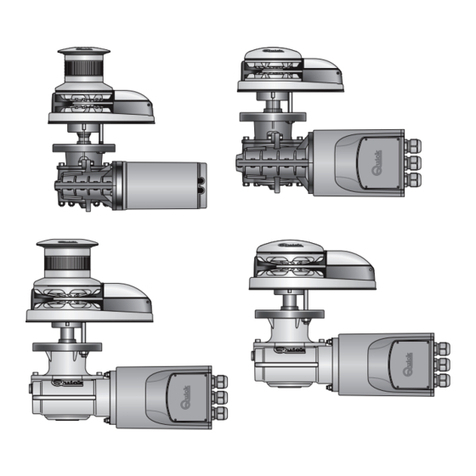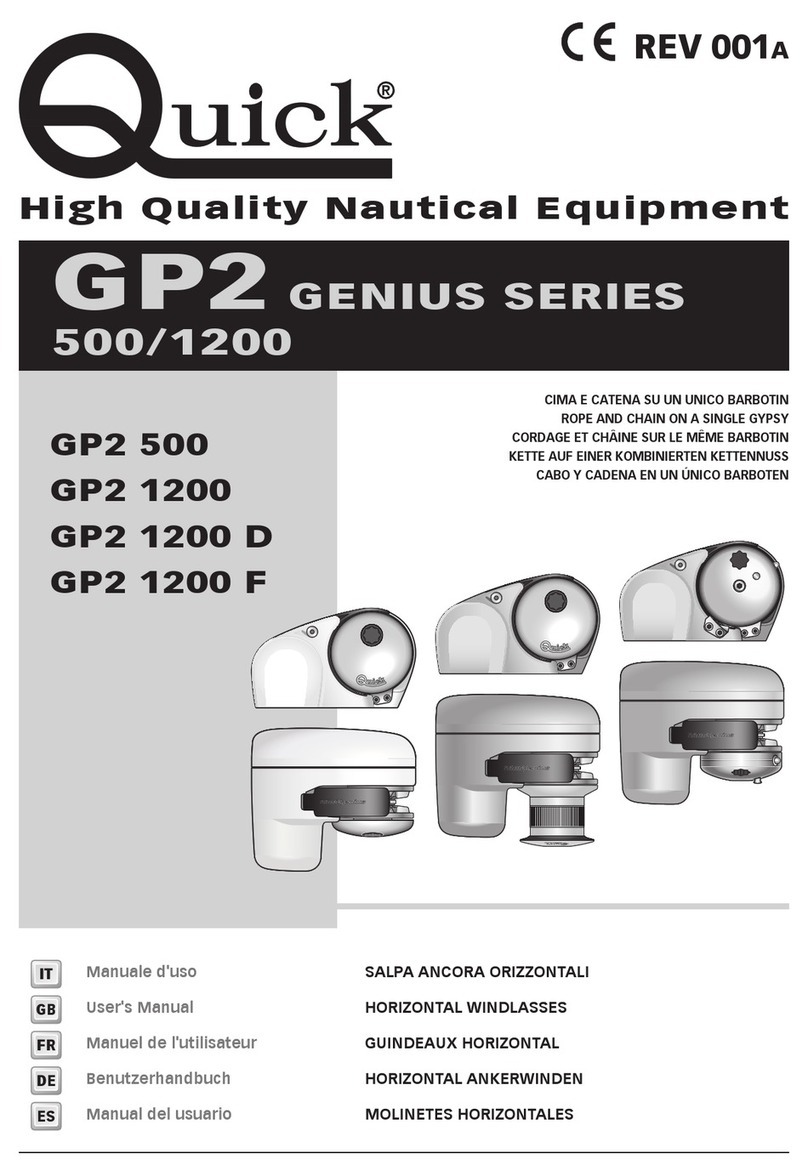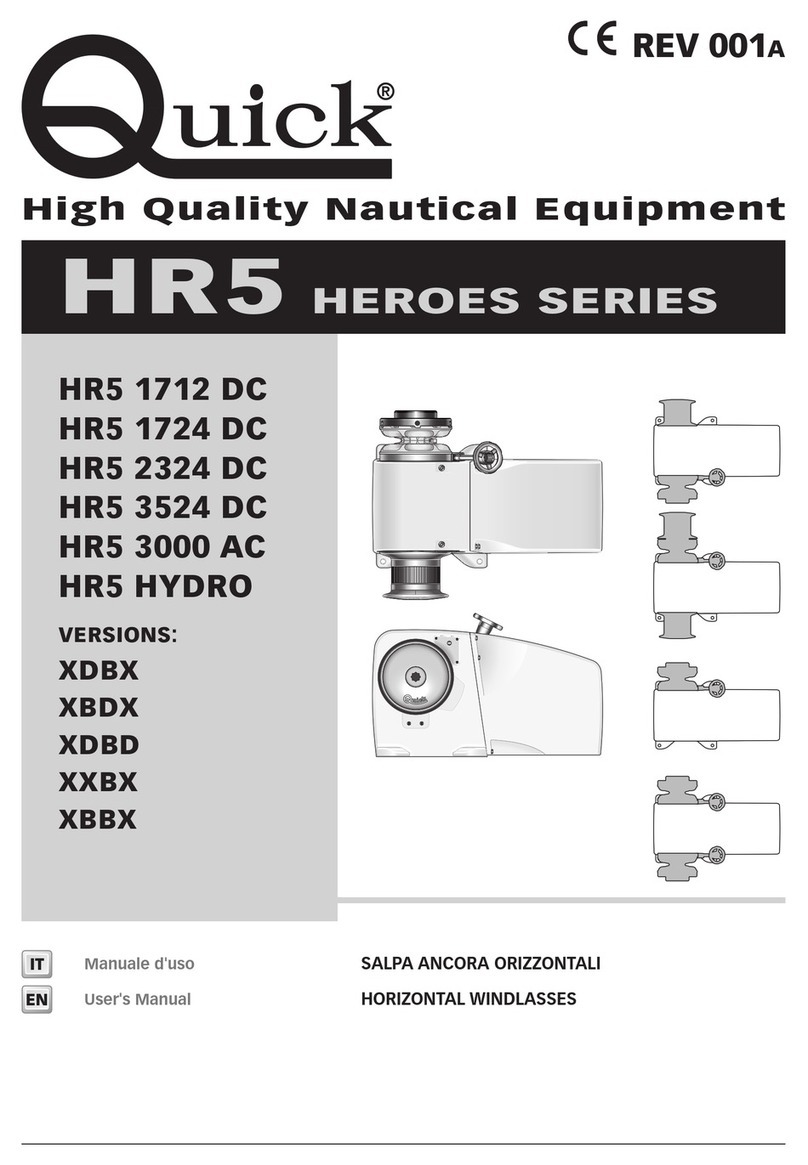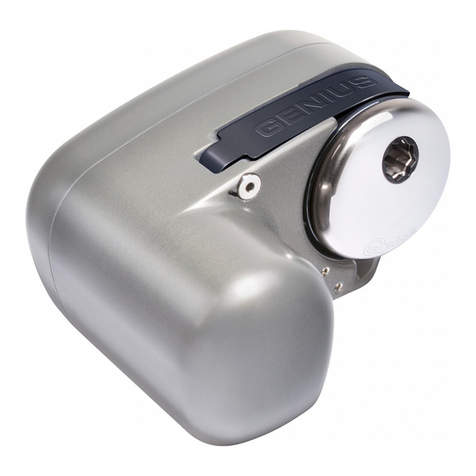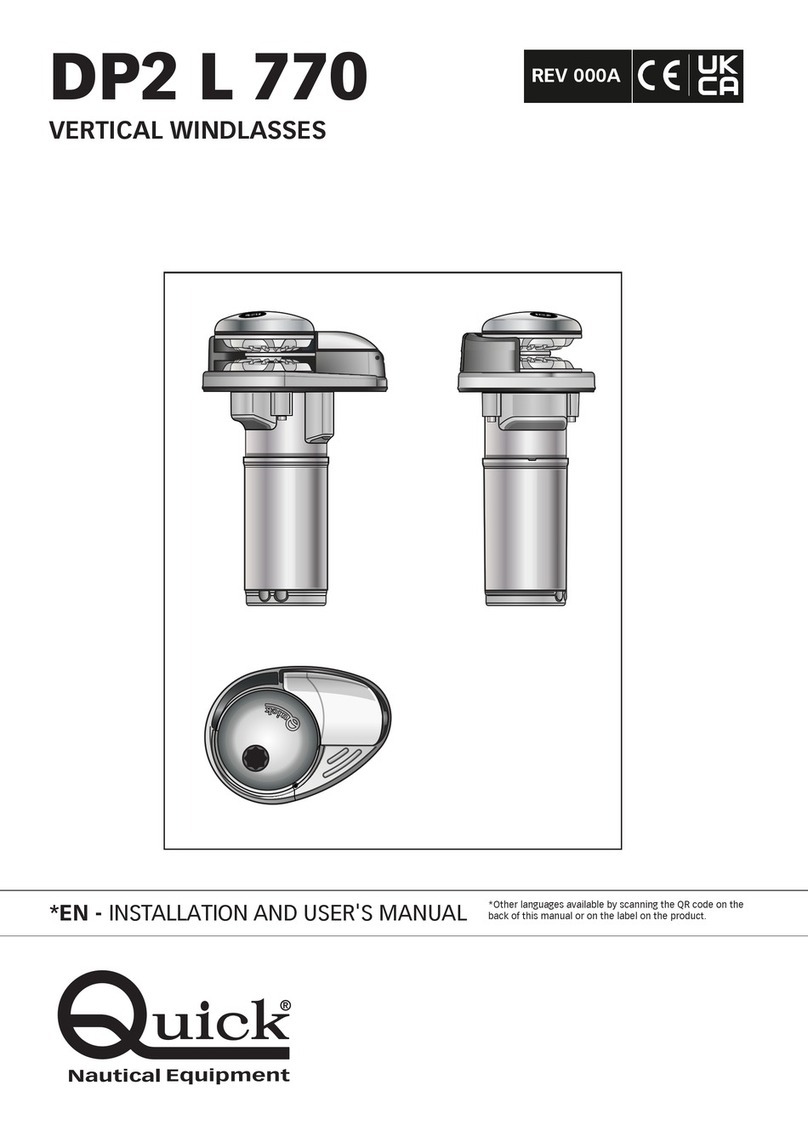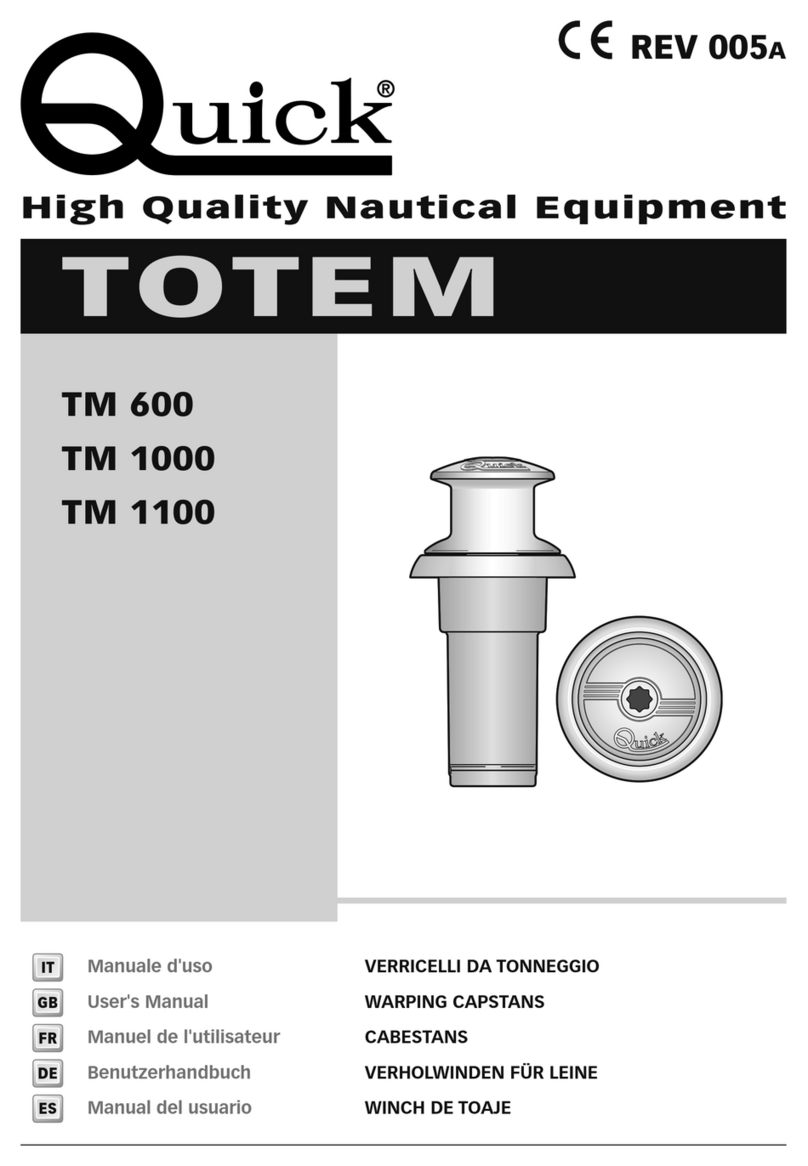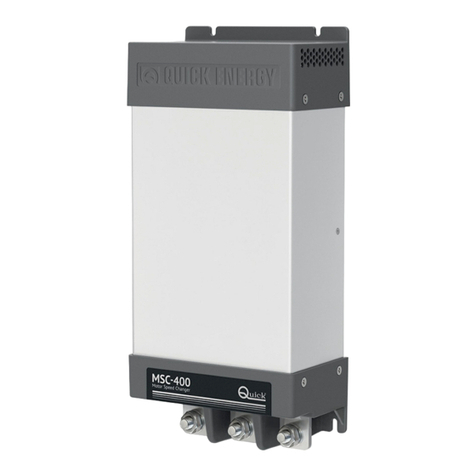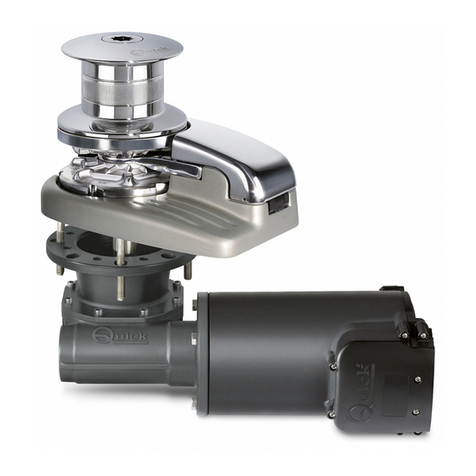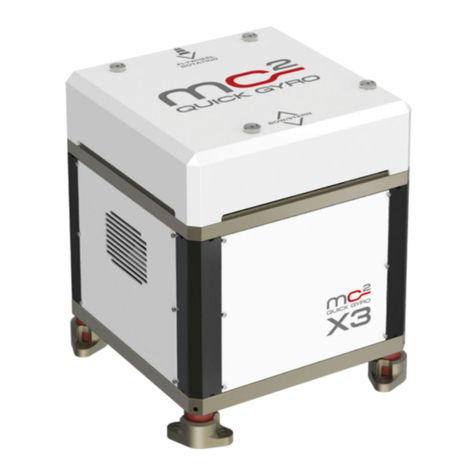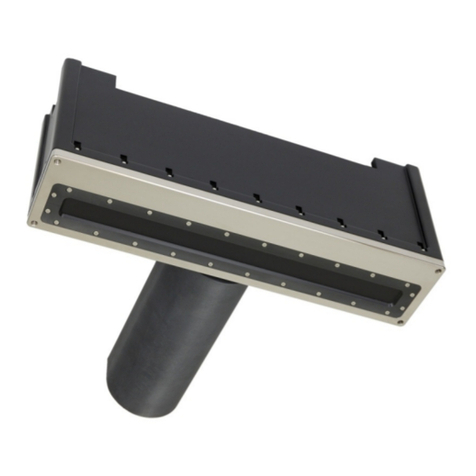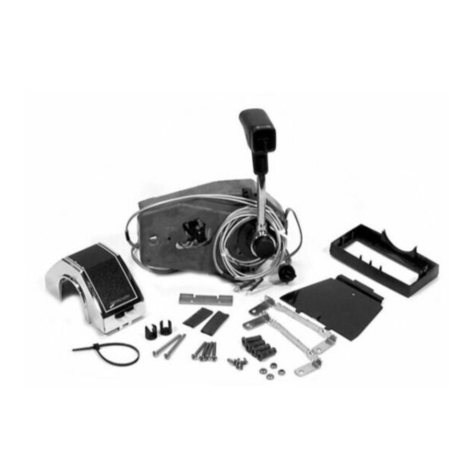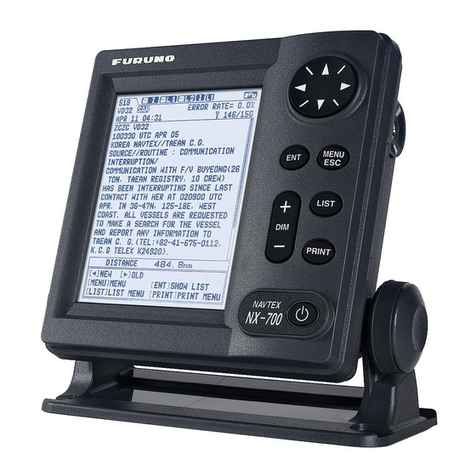
EAGLE 700/1000/1400W - REV005A
7
USO - AVVERTENZE IMPORTANTI
I
ATTENZIONE: non avvicinare parti del corpo o oggetti alla zona in cui scorrono catena e barbotin. Ac-
certarsi che non sia presente l'alimentazione al motore elettrico quando si opera manualmente sul salpa
ancora (anche quando si utilizza la leva per allentare la frizione); infatti persone dotate di comando a di-
stanza del salpa ancora (pulsantiera remota o radiocomando) potrebbero accidentalmente attivarlo.
ATTENZIONE: bloccare la catena con un fermo prima di partire per la navigazione.
ATTENZIONE: non attivare elettricamente il salpa ancora con la leva inserita nella campana o nel coper-
chio del barbotin.
ATTENZIONE: Quick
®
consiglia di utilizzare un interruttore specifico per correnti continue (DC) e ritardato
(magneto termico o magneto idraulico) per proteggere la linea del motore da surriscaldamenti o corto-
circuiti. L’interruttore può essere utilizzato per isolare il circuito di comando del salpa ancora evitando così
azionamenti accidentali.
USO DELLA FRIZIONE
Il barbotin è reso solidale all’albero principale (15) dalla frizione (5). La frizione si apre (stacco) utilizzando la leva
(1) che inserita nel coperchio barbotin (2) dovrà ruotare in senso antiorario. Ruotando in senso orario si provo-
cherà la chiusura (attacco) della frizione.
PER SALPARE
Accendere il motore dell'imbarcazione. Assicurarsi che la frizione sia serrata ed estrarre la leva. Premere il
pulsante UP del comando a vostra disposizione. Se il salpa ancora si arresta senza che l'interruttore magneto-
idraulico (o magnetotermico) sia scattato, attendere qualche secondo e riprovare (evitare una pressione conti-
nuata del pulsante). Se l'interruttore magneto-idraulico (o magnetotermico) è scattato, riattivare l'interruttore
e attendere qualche minuto prima di riprendere a salpare. Se, dopo ripetuti tentativi, il salpa ancora continua
a bloccarsi consigliamo di manovrare l'imbarcazione per disincagliare l'ancora. Controllare la salita degli ultimi
metri di catena per evitare danni alla prua.
PER CALARE
La calata dell'ancora si può effettuare tramite comandi elettrici oppure manualmente. Per effettuare l'opera-
zione manualmente occorre aprire la frizione lasciando libero il barbotin di girare sul proprio asse e trascinare
la catena in acqua. Per frenare la caduta dell'ancora bisogna ruotare la leva in senso orario. Per calare l'ancora
elettricamente occorre premere il pulsante DOWN del comando a vostra disposizione. In questo modo la calata
è perfettamente controllabile e lo svolgimento della catena è regolare. Per evitare sollecitazioni sul salpa ancora,
una volta ancorati, bloccare la catena con un fermo oppure fissarla ad un punto saldo con una cima.
USO DELLA CAMPANA
ATTENZIONE: Prima di eseguire operazioni di tonneggio, accertarsi che l'ancora e relativa catena siano
fissate saldamente ad una bitta o ad altro punto resistente dell'imbarcazione.
Per l’uso indipendente della campana (17) aprire la frizione con la leva (1), (almeno 2 giri del coperchio barbotin
sul lato barbotin in senso antiorario). Rimuovere la leva dal coperchio barbotin (2), avvolgere la cima sulla cam-
pana (almeno 3 giri).
ATTENZIONE: durante il recupero, mantenere un'adeguata distanza di sicurezza tra mani e campana salpa
ancora.
Terminata la procedura di recupero serrare la frizione stringendo la bussola del coperchio barbotin (2) in senso
orario e assicurare la cima ad una bitta o ad altro punto resistente dell'imbarcazione.
